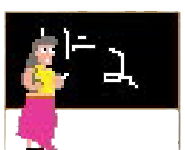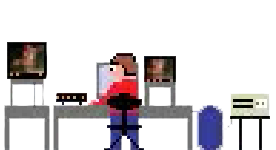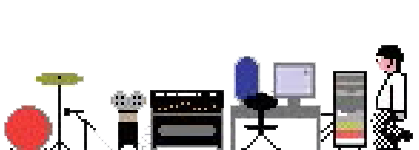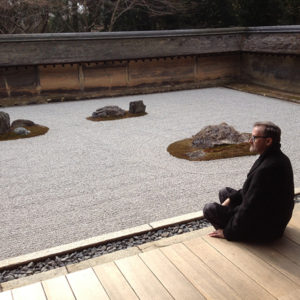Reviewing
Music From…On Being Invisible II
David Rosenboom
David Rosenboom
David Rosenboom (b. 1947) is a composer, performer, interdisciplinary artist, author and educator known as a pioneer in American experimental music. During his long career, he has explored ideas about the spontaneous evolution of musical forms, languages for improvisation, new techniques in scoring for ensembles, multi-disciplinary composition and performance, cross-cultural collaborations, performance art and literature, interactive multi-media and new instrument technologies, generative algorithmic systems, art-science research and philosophy, and extended musical interface with the human nervous system. He holds the Richard Seaver Distinguished Chair in Music at California Institute of the Arts, where he has been Dean of The Herb Alpert School of Music since 1990 and serves as a board member of the Center for New Performance. He taught at Mills College from 1979 to 1990, where he held the Darius Milhaud Chair and was Professor of Music, Head of the Music Department, and Director of the Center for Contemporary Music. In the 1970s he was founding faculty and a professor in the Music Department at York University in Toronto. He studied at the University of Illinois in the 1960s with Salvatore Martirano, Lejaren Hiller, Kenneth Gaburo, Gordon Binkerd, Paul Rolland, Jack McKenzie, Soulima Stravinsky and others and was later awarded the George A. Miller Professorship as a visiting artist there. He has also taught or held positions in the Center for Creative and Performing Arts at the State University of New York at Buffalo, at Bard College, Simon Fraser University, San Francisco Art Institute, California College of Arts and Crafts, Center for Advanced Musical Studies at Chosen Vale, and Ionian University in Greece. His work is widely presented around the world. Recent highlights have included a fifty-year retrospective of his music presented in a series of performances at the new Whitney Museum of American Art in collaboration with ISSUE Project Room in New York (2015), a six-month exhibition of his work with brainwave music at Centre Pompidou-Metz in France (2015-2016), a four-month exhibition of his work in computer music at Whitechapel Gallery in London (2015-2016), and numerous publications, recordings, festival performances, and keynote speeches at international conferences. Following his retrospective at the Whitney Museum, he was lauded in The New York Times as an “avatar of experimental music.” Website: http://www.davidrosenboom.com
Cynthia Allen
demonstrated PAD, a 3-D navigational interface designed by Ken Perlin at the NYU Media Research Lab.
Richard Lainhart
presented videotape and computer-based playback of work created with Electric Image Animation Systems.
Duane Whitehurst
focused on current trends in online interaction and discussed technical innovations on the horizon. Of particular interest was JAVA, “a language for writing computer programs.”
Adrianne Wortzel
presented her interactive “hyper-narrative” and the development of “MusEleanor,” a “fictive electronic chronicler of our times.”
Kevin Centanni
discussed new tools available for artists to add custom interactive features to projects or installations, including “triggering responses via MIDI, infrared sensing and driving peripherals from laser ports.”
Nick Didkovsky
Nick Didkovsky is a guitarist, composer, and music software programmer.
He founded the rock band Doctor Nerve in 1983 (www.doctornerve.org) and is a member
of the Fred Frith Guitar Quartet. He has composed for Bang On A Can All-Stars,
Meridian Arts Ensemble, ETHEL, loadbang, and others. His $100 Guitar Project passed
a guitar through the hands of over 60 players, culminating in a double CD on Bridge
Records, whose profits are donated to CARE, a leading humanitarian organization
fighting global poverty (www.100dollarguitar.com). His Black Sabbath Guitar Lessons
on YouTube have been received with great enthusiasm by metal fans all over the
world. His metal band Häßliche Luftmasken premiered in June 2011
(www.tinyurl.com/maskenmetal). With computer music pioneer Phil Burk, Didkovsky
created Java Music Specification Language (www.algomusic.com), which is used by
composers all over the world. He has taught JMSL at Dartmouth College, CalArts,
Columbia University, and NYU. With composer Georg Hajdu, he has created MaxScore, an
object that uses JMSL to bring music notation to Max/MSP. His compositions and
guitar work appear on over 50 records with releases on Cuneiform Records, SONY
Classical, New World Records, Bridge Records, Pogus Productions, Koch Classics, and
Cantaloupe. His Punos Music record label serves up his more extreme musical projects
(www.punosmusic.com).
Dawn Stoppiello
discussed the aesthetic and practical issues raised when integrating interactive technology and live performance.
Mark Coniglio
Composer Mark Coniglio and choreographer Dawn Stoppiello, the artistic
directors of Troika Ranch, a Manhattan-based dance theater company “committed to
integrating interactive technology and live performance,” gave a public workshop for
viewing their work in progress and answered questions about interactive installation
creation and presentation. With live video streaming courtesy of Siteways.
Karthik Swaminathan
collaborated on “Mobile Hi-Fi Lounge,” an interactive arts show on the Internet: “Utilizing sound interaction and MIDI streaming, the audience is allowed to jam in real time in the same key.”
BAvant
collaborated on “Mobile Hi-Fi Lounge,” an interactive arts show on the Internet: “Utilizing sound interaction and MIDI streaming, the audience is allowed to jam in real time in the same key.”






